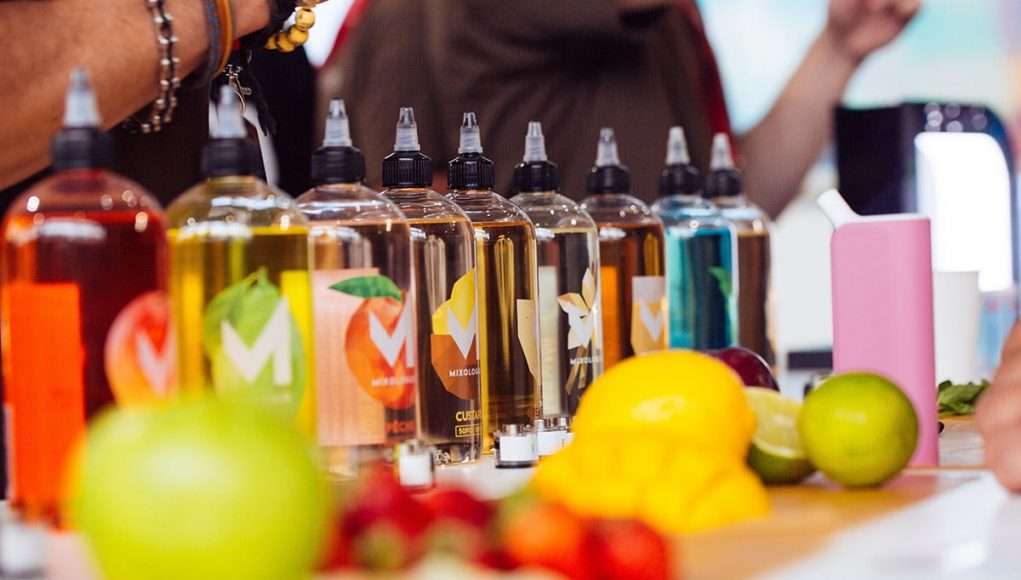More specifically, in 2021 among Vermont high schoolers, 5.4% reported smoking at least once in the 30 days prior. This is a 21.7% decrease from 2019’s rates and a whopping 83.9% decline from 1993 when more than one-third (33.5%) of Vermont high schoolers were currently smoking. Moreover only 2.8% of high schoolers were currently using smokeless tobacco products, which was a 20% decrease from 2019 and a 45.2% decline from 2017, when 5.2% of students were currently using smokeless tobacco.
Additionally, only 33.3% of Vermont high school students reported ever trying a vape, while 16.1% had vaped at least in the 30 days prior to the survey. This equates to a drop of 33.1% in ever-trying an e-cigarette and one of 39% in current use.
However, perhaps the most notable finding of this survey, is the fact that contrary to popular anti-vape propaganda, the 2021 Vermont YRBS found that actually less than one-fifth (18%) of high schoolers reported ever trying a flavoured tobacco product such as flavoured vapes. Among high school students who were currently vaping, the most cited reasons to vape were to get a high/buzz from nicotine at 32% or due to feeling stressed and anxious at 32%. Only 3% of students reported currently using the products because of the availability of flavours.
These findings are consistent with national survey data which found that in 2021, among U.S. middle and high school students who were currently vaping, 43.4% cited using them because they were feeling anxious, stressed, and/or depressed, and only 13.2% vaped because of flavors.
No significant addiction differences due to vaping flavoured vs unflavoured vapes
Meanwhile, a recent study extracting data from the Population Assessment of Tobacco Health (PATH) survey, explored the impact of non-traditional vape flavours on e-cig addiction and harm perception. Titled, “E-cigarette addiction and harm perception: Does initiation flavor choice matter?,” the current study looked into the relationship between vape flavour type and increased adolescent use.
Analysing data from 1,043 teens aged between 12 and 17 years, the research team found that there was actually no significant difference in addiction levels between those initiating with traditional versus non-traditional flavours.
Most adults prefer flavours
On the other hand, a 2022 study conducted by the World Vapers’ Alliance (WVA) had found that vape flavours are actually crucial in helping adult smokers making the switch. A staggering 97% of respondents said they prefer non-tobacco vape flavours and only 3% said they prefer tobacco. This means that if vape flavours are banned, more than half of adult vapers would try to obtain their preferred flavours on the black market or return to smoking.
Renowned cardiologist and smoking cessation researcher Dr. Konstantinos Farsalinos, has recently made the same point, saying that vape flavours are crucial at helping smokers switch to safer nicotine alternatives.
The researcher has recently published, “The Case for Flavours in Tobacco Harm Reduction, to Save Lives”, a paper which discusses the link between flavoured nicotine products and smoking cessation success in detail. The report highlights that ultimately flavour bans are a form of prohibition, which only fuel the growth of massive black markets and also lead to increased smoking rates, as many vapers would turn back to smoking.
Discussing the report in a recent episode on Regulator Watch, Farsalinos discussed Health Canada’s recently proposed ban, saying that their case for such a ban may be crumbling as evidence keeps indicating its potentially negative impact on public health.
A 2022 BMJ study titled, “Effects of electronic cigarette e-liquid flavouring on cigarette craving,” looked into the relationship between the availability of e-cig flavours and smoking cessation behaviour.
The experimental study included a sample of 84 adult daily smokers in the UK. The participants were randomly split in two groups, a group given a flavoured nicotine vape and the other an unflavoured one for 1 week.
The researchers reported that they found no evidence that nicotine-containing fruit/sweet-flavoured as opposed to unflavoured vapes, have different effects on cigarette cravings after 1 week of use. However, they added, further research is required to analyze this relationship over a longer period of time.
California’s flavour ban has backfired
While, in a recent article on The Sun discussing the flavour ban in California, William F. Shughart II, a J. Fish Smith Professor in Public Choice at Utah State University’s Huntsman School of Business and Josh T. Smith a research manager at the Center for Growth and Opportunity at Utah State University, have reiterated that the ban will just push Californians back towards unflavored tobacco products, typically cigarettes.
They added that the country’s obsession with protecting children from vapes is coming in the way of smoking cessation for adults. “The worry about children is an important policy concern, but it’s overly broad. Adults also enjoy the same flavors. A glance at cocktail menus at any bar will show drinks with similar flavors. And don’t forget the fruity alcoholic seltzers and craft beers on grocery store shelves.”
Vapes and cigarettes are economic substitutes
In fact a study published in JAMA Pediatrics following San Francisco’s flavour ban, found that the ban had a counter negative effect. In August 2020, SB 793 by Senator Jerry Hill, banned the sale of flavoured tobacco products, including non-tobacco products such as e-cigarettes across the city of San Francisco.
The study titled, “A Difference-in-Differences Analysis of Youth Smoking and a Ban on Sales of Flavored Tobacco Products in San Francisco, California,” aimed to determine any relationship between San Francisco’s ban on flavoured tobacco product sales and smoking among high school students younger than 18 years.
The city’s chief economist had already predicted that the money spent on vaping products prior to the ban would still be spent on other nicotine products such as conventional cigarettes. In line with this prediction, the researchers found that following the ban, teenagers in the city’s high schools were more likely to take up smoking than teenagers in US school districts where no flavour bans were imposed. While prior to the ban, smoking rates in San Francisco were similar to those of many cities across the country.













